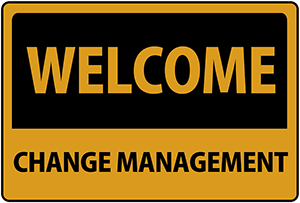Let’s be honest: for many business owners, the last few years have felt like a perpetual state of “What’s next?” From global shifts and lightning-fast tech advancements to unpredictable policy shifts, the world has been demanding adaptability.
Remember 2020? We were forced to adapt rapidly, finding solutions such as remote work, digital tools, and crisis response. Change management shifted from rigid, long-term plans to agile, immediate responses, with a crucial focus on resilience, employee well-being, and clear communication.
And now? We’re still in that mode of real-time adaptability, but with an added layer of political and economic volatility. This new landscape demands what I call “Change-Agile Leadership.” It’s a modern approach that emphasizes adaptability, resilience, and proactive engagement in the face of continuous, often surprising, change. Risk management as we navigate global uncertainty has become even more necessary.
The Elephant in the Room: Navigating Political Headwinds
For many of you, the daily headlines about tariffs, trade negotiations, and shifting regulations are not just news; they are directly impacting your bottom line and your ability to plan for the future. The “on-again, off-again” nature of some policies, especially concerning tariffs, can make strategic planning feel like trying to hit a moving target in the fog.
As leaders, we can’t afford to be paralyzed by this uncertainty. We must embrace it and be ready to adjust strategies quickly. This means leading with empathy and emotional intelligence, recognizing that your employees and customers are feeling these ripples too. My core advice is to decentralize decision-making and establish robust feedback loops. This empowers your teams to sense and respond to changes in real-time, whether it’s a sudden tariff announcement or a shift in consumer sentiment.
Your Two Choices: Beyond Denial and Paralysis
Perhaps I should have started by stating the obvious: when faced with massive disruption, many companies enter a phase of denial or paralysis. Both are completely understandable human reactions. But here’s the hard truth: neither will help your organization maintain or gain a competitive advantage.
Instead, there is a significant upside for organizations with the foresight to mobilize proactively. By considering disruptive scenarios – even those stemming from political shifts – and responding in a way that powers performance, you can transform challenges into opportunities.
All too often, companies find themselves in a reactive scramble: chasing down tariff mitigation strategies after the fact, or suddenly realizing AI is here and they are behind. However, resources are available! AI training and other technological advancements can help you gain efficiency and insights. Furthermore, don’t forget that trade organizations at both the Federal and State levels are staffed with experts who are focused on your future success and can often provide crucial guidance through these turbulent times.
The key is to shift from a mindset of being reactive to a mindset of being proactively agile. It is about building an organization that isn’t just surviving the daily unpredictability but instead thriving within it. You have the power to influence your internal response, even when external forces feel beyond your control.
Please let me know how the Go Global Initiative can help you develop your strategy.

